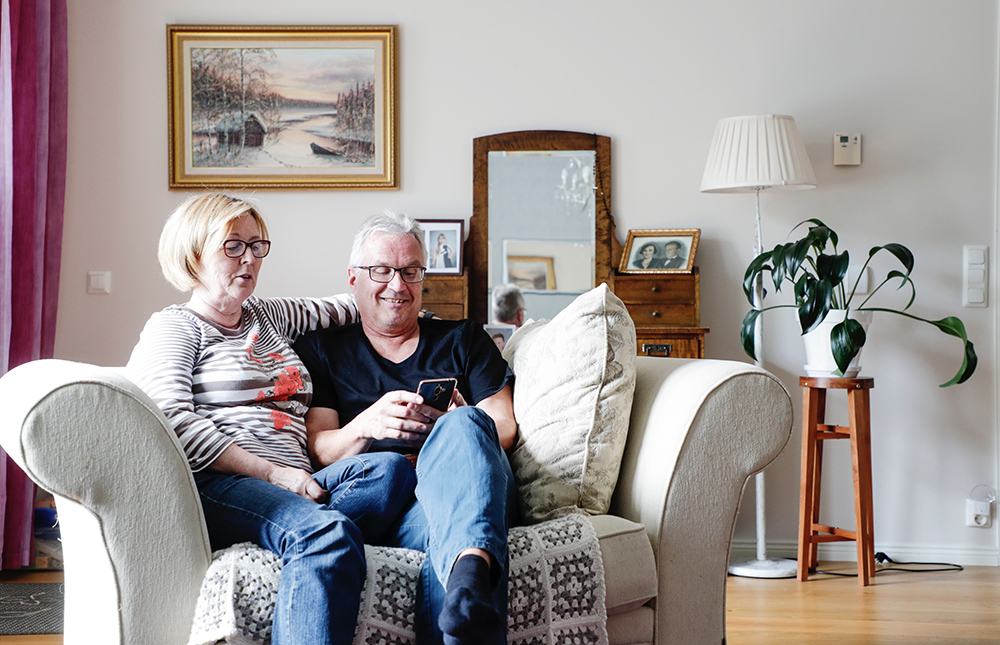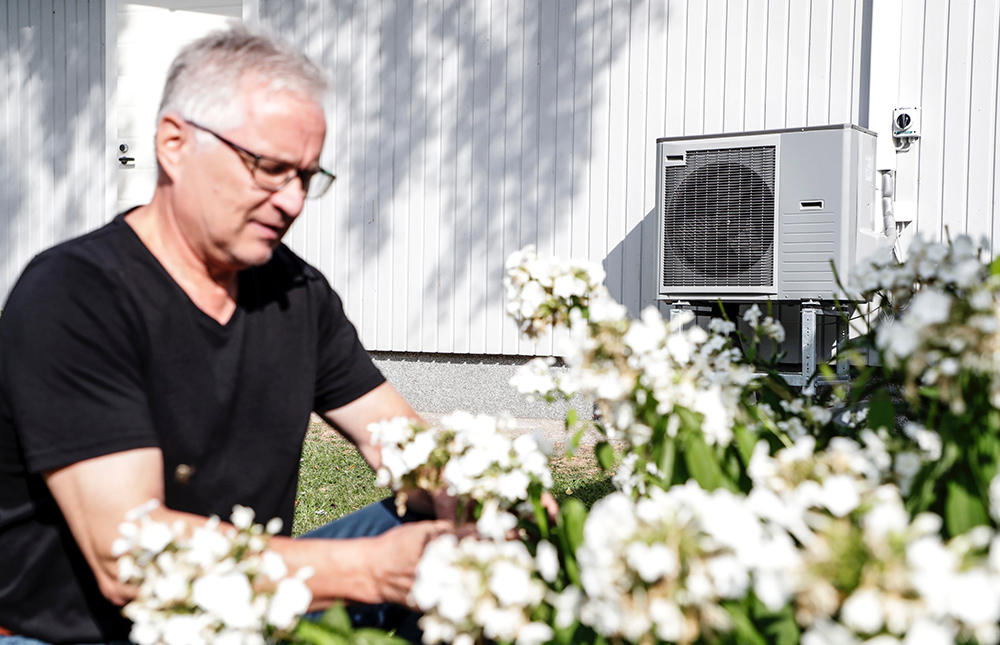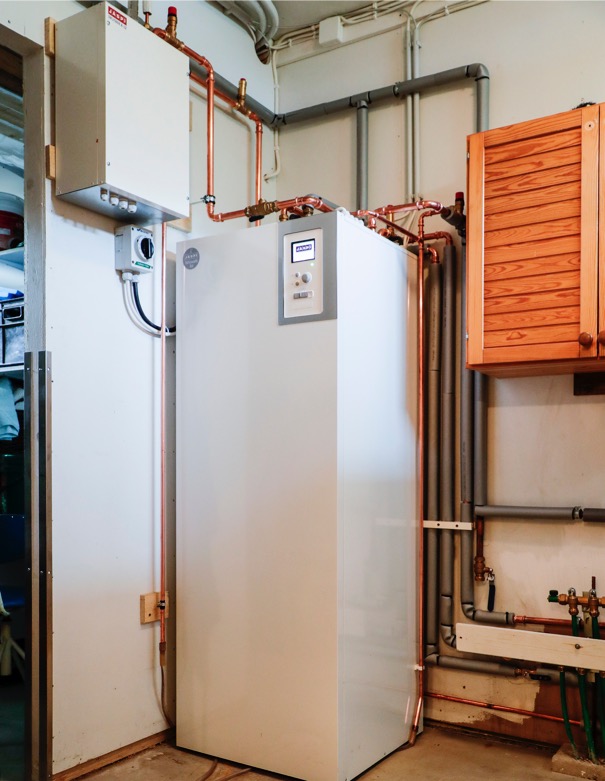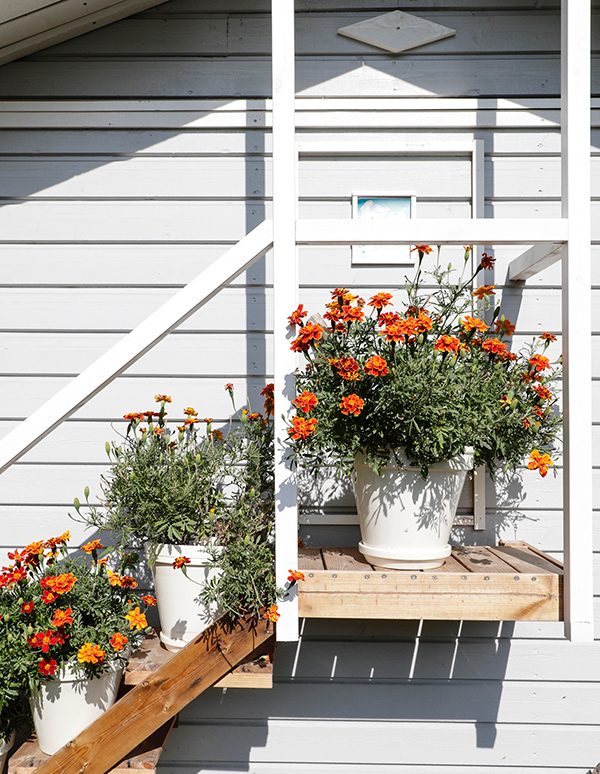The new Jäspi air-to-water heat pump cut the heating costs of a detached house by less than half – and there is not an inch compromised on living comfort.

Jouko Värikoski is satisfied with his accurate calculations. The new Jäspi air-to-water heat pump cut the heating costs of a detached house by less than half. And not an inch has been compromised on living comfort.
We lived in 2006 when the Värikoski family built a detached house in Latomäki, Haavisto, Nokia. 135 residential square meters were created on a plot of almost a thousand square meters. In addition, there was a 36 square meter space on the side of the house for a car and storage.
The traditionally designed house is still a delight to the eye as it has been well maintained.
– We are going to stay here as long as the foot rises a little. We have both lived in these landscapes for more than 60 years and we do not need to move out, says Merja Värikoski.
The couple’s latest pride is the Jäspi Tehowatti Air Split air-to-water heat pump, which utilizes the free solar energy bound to the open air at 8 kilowatts. It was introduced in May 2017.
The air-to-water heat pump takes care of the heating of the house and the heating of the hot water.
– It is an easy-to-use device that increases the comfort of living, which also saves a lot of electricity and euros, Jouko Värikoski is excited about.
The device changed, but the Jäspi brand remained
Jouko is an exact man, so the heater repair was not born on a whim. A careful comparison of the heating method and the different brands took a couple of years.
Jouko’s choice was modern, domestic Jäspi Tehowatti Air. The previous electric boiler, which had served flawlessly for more than a decade, was also from the same manufacturer. Heat distribution is handled by the original water circulating underfloor heating.
Geothermal was also an option. But when you should have drilled a heat well and brought the pipes through the wall – it felt too cumbersome. In addition, the whole would have become thousands of euros more expensive than chosen.
– There was nothing wrong with the original compact electric boiler, it was a good game too. But electricity was consumed pretty much.
The new heat pump and its installations cost a round 10,000 euros. The equipment accounted for just under 7,000 euros. The installation receives a household deduction for tax purposes, the host specifies.
Jouko got a few hundred when he sold the old electric boiler. More important than money was recycling. The boiler will serve in Oulu for a long time.

– If the outdoor temperature falls below -20 degrees or the heating capacity of the device does not otherwise meet the need, the indoor unit’s electric heaters will start heating the water in the 215-liter tank, Jouko Värikoski says. Jouko himself laid a solid foundation for the outdoor unit. You can’t talk about noise, but even at full power, the outdoor unit tends to hum softly.
Annual savings of one thousand euros
How did the new hardware change electricity consumption? It can be seen from Värikoski’s exact table, in which he has recorded electricity bills for years.
When the house had an electric boiler, the total annual consumption averaged 19,000 kWh. In the first year, the air-to-water heat pump reduced the reading to 11,000 kWh, even though it could hold a long and freezing period of frost.
Of the total consumption, 4,500 kWh is household electricity, which is consumed regardless of the heating device. Thus, during the electric boiler, the heating of the house and hot water took up 14,500 kWh per year. The air-to-water heat pump consumed 6,500 kWh per year. The difference, 8,000 kWh, means annual savings of more than 55 percent in heating and hot water production. In money, it is over 1,000 euros.
Jouko calculated that the heating appliances will pay for themselves in eight years. In the calculation, he took into account the household deduction and the moderate increase in the price of electricity. If prices escape more sharply, the amortization period will be further shortened.
The family has not compromised on living comfort. The indoor temperature stays at 22 degrees and there is no staring in the shower. In the winter, wood has been burned in the fireplace a maximum of 2-3 times a week.
– I don’t think we need to save more than we do now, says Jouko. Merja agrees that it’s not here.
A modern device on the site of an old boiler
The air-to-water heat pump for the Värikoski house was sold, dimensioned and installed by Näsin Vesijohtoliike in Tampere. The same company introduced Jouko to the use of the device. Värikoski praises the service and the speed of installation.
– The seller didn’t promise too much, which would have just annoyed me. The delivery went smoothly in three days. The transport-damaged housing damper was replaced and the circulating water pump connection leak was repaired. Neuvojakin I’ve got, so can no longer hope for change?
The outdoor unit was placed under the eaves in a warm place. The host illuminated the concrete platforms on which the 75-centimeter-high and 60-pound outdoor unit was raised.
– It doesn’t jump. And the device is not disturbed by noise. The sound pressure level is only about 50 decibels a couple of meters away. In summer, it is very quiet when the inverter controls the fan to slow speeds.
The condensate from the outdoor unit flows in a pipe with a booster heat into the drain pipe below. The condensate pipe must not freeze.
The installers of the slightly larger heat transfer unit attached the slightly larger mailbox to the wall of the technical space. The indoor unit included in the accumulator stands on the site of the former electric boiler.
The copper water pipes connected to the indoor unit are eye-catching, neat work! Two safety valves and one deaeration valve stand out from the sea. The overflow pipe is led to the drain.
 The interface is easy to use
The interface is easy to use
The host introduces the user interface of the indoor unit, which has a large enough screen and easy-to-understand menus. Navigation is handled with a couple of buttons and a control wheel. The main menus are indoor climate, hot water, info and my equipment.
– I can easily adjust the indoor temperature and hot water temperature. I can also program heating and hot water for days of the week and even for long periods. I can change the heat curve of the house and the flow temperature of the heating water. For hot water comfort mode, I can choose economy, normal or luxury depending on how much hot water we want.
There have been no malfunctions. If it should, the display will tell you what it is and what to do.
– I’m so rarely modified or altered these settings, when there was no need, Jouko says.
Cleaning is sufficient to service the air-to-water heat pump
Life has been easy with an air-to-water heat pump. There has been enough heat and there have been no worries.
The maintenance of the heating system is also simple. According to Jouko Värikoski, the sediment strainer in the return line of the underfloor heating piping must be checked and cleaned from time to time. In technical terms, it is practically the only maintenance site.
The maintenance of the outdoor unit is sufficient to remove leaves and other debris from the trees. During the winter season, make sure that no ice accumulates on the grille of the outdoor unit or on the bottom of the unit.
The device would have a few more subtleties in reserve, which Värikoski has not yet utilized. Remote control could be used to monitor and control the heating outside the home, for example when traveling. The summer heat is cooled by a cooling convector, which could be a wall-mounted Cool W or a ceiling model Cool R.

Choose the appropriate solution:
A Power up the heating system and connect it alongside an existing oil boiler or energy accumulator – See here Jäspi Basic Split
B Replace the old heating system or in the new site choose air-water heating – See here Jäspi Tehowatti Air Split

